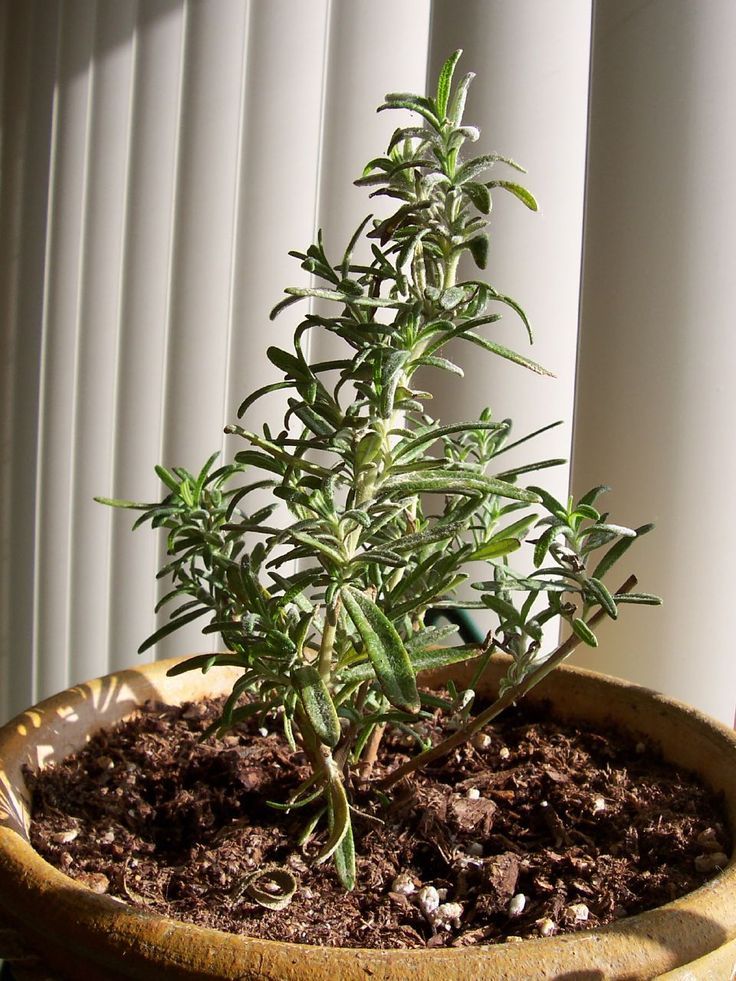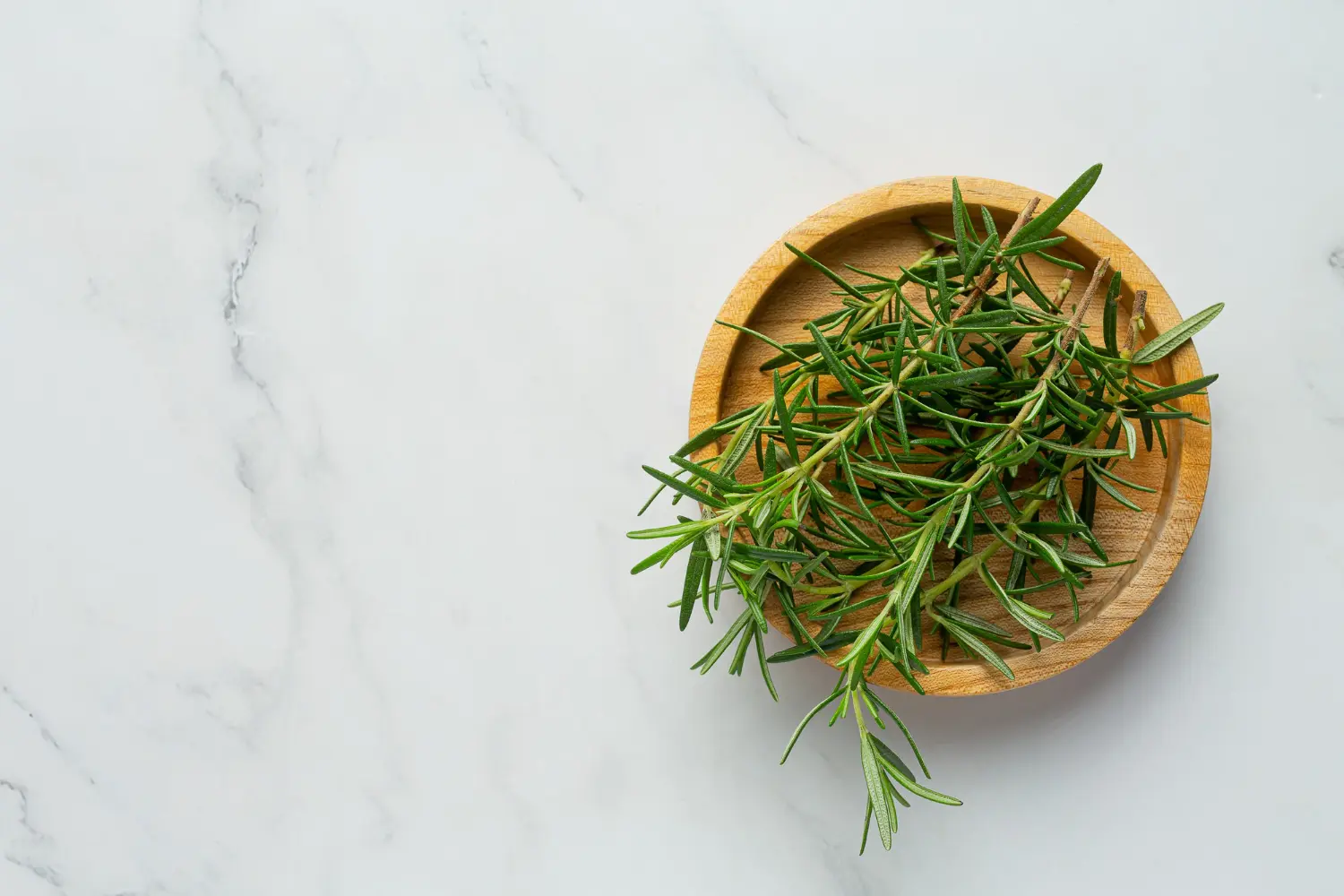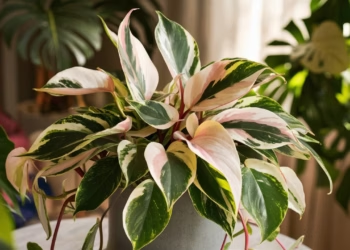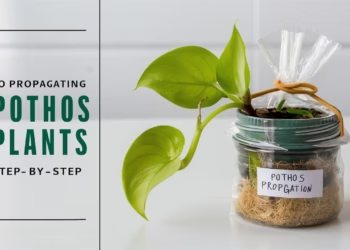Bringing a rosemary plant indoors is like inviting a piece of the Mediterranean into your home. Not only does this fragrant herb add a burst of flavor to your culinary creations, but it also brings a touch of greenery and a soothing aroma to your living space. If you’ve ever tried growing rosemary indoors and found it challenging, you’re not alone. This guide will walk you through the essential steps to care for and grow a rosemary plant indoors successfully. From choosing the right pot to mastering watering techniques, we’ve got you covered!
Table Of Contents
Why Grow Rosemary Indoors?
Growing rosemary indoors comes with a host of benefits. Here are a few reasons why you should consider adding this hardy herb to your indoor garden:
Year-Round Freshness and Convenience
Growing rosemary indoors allows you to have a constant supply of fresh, flavorful herbs. No more relying on store-bought dried rosemary that loses its potency over time. Simply pluck a few sprigs whenever you need them, ensuring maximum freshness and taste.
Culinary Benefits
Rosemary’s robust flavor enhances a variety of dishes, from roasted vegetables and meats to sauces and infusions. Having fresh rosemary at your fingertips encourages you to experiment with new recipes and elevate your culinary skills.
Optimal Growing Conditions
Indoor rosemary plants are protected from harsh outdoor elements such as extreme temperatures, frost, and strong winds. This controlled environment ensures your plant remains healthy and productive throughout the year, even during winter.
Improved Air Quality
Rosemary plants release beneficial compounds that can purify and freshen the air in your home. This natural air purification contributes to a healthier living environment.
Getting Started: Choosing the Right Rosemary Plant
Not all rosemary plants are created equal, and some varieties are better suited for indoor growth. Here are a few types to consider:
- ‘Arp’: Known for its cold tolerance, ‘Arp’ is a good choice for indoor growing where temperatures can fluctuate.
- ‘Tuscan Blue’: This variety is prized for its upright growth and vibrant blue flowers, making it a decorative addition to your indoor garden.
- ‘Prostratus’: If you prefer a trailing rosemary, ‘Prostratus’ is a great option. It cascades beautifully over the edges of pots and hanging baskets.

Setting Up: The Essentials
Choosing the Perfect Pot
When it comes to growing rosemary indoors, the right pot can make all the difference. Here’s what you need to know:
- Size matters: Start with a pot that’s at least 6-8 inches in diameter. As your plant grows, you may need to transfer it to a larger pot to accommodate the expanding root system.
- Drainage is key: Ensure your pot has plenty of drainage holes. Rosemary doesn’t like to sit in waterlogged soil, which can lead to root rot.
- Material: Terracotta pots are ideal because they’re porous and allow the soil to dry out more evenly, preventing overwatering.
Soil Selection
Rosemary thrives in well-draining soil. Here are a few tips for choosing the right mix:
- Potting mix: Use a high-quality potting mix designed for herbs or succulents. These mixes typically have added sand or perlite to improve drainage.
- DIY mix: You can also create your own blend by mixing equal parts of potting soil, coarse sand, and perlite.

Light and Temperature: Creating the Perfect Environment
Lighting Needs
Rosemary is a sun-loving plant, and providing enough light is crucial for its indoor survival. Here’s how to meet its needs:
- Direct sunlight: Place your rosemary plant in a south-facing window where it can receive at least 6-8 hours of direct sunlight each day.
- Supplemental lighting: If natural light is insufficient, consider using a grow light. LED grow lights are energy-efficient and can provide the full spectrum of light that rosemary requires.
Temperature and Humidity
Maintaining the right temperature and humidity levels is also important for indoor rosemary:
- Temperature: Rosemary prefers temperatures between 55-80°F (13-27°C). Avoid placing it near drafts or heating vents where temperatures can fluctuate dramatically.
- Humidity: While rosemary doesn’t need high humidity, indoor air can be quite dry, especially in winter. A humidity level of around 40-50% is ideal. You can use a humidity tray or a small humidifier if necessary.

Watering and Feeding: Keeping Your Rosemary Happy
How to Water Rosemary
Watering can be tricky with rosemary, as it doesn’t like to be too wet or too dry. Here’s the best approach:
- Watering frequency: Water your rosemary when the top inch of soil feels dry to the touch. This typically means watering once every 1-2 weeks, but it can vary depending on the environment.
- Watering method: Water thoroughly until water drains out of the bottom of the pot. Ensure excess water doesn’t sit in the saucer.
Fertilizing Tips
Rosemary doesn’t need a lot of fertilizer, but occasional feeding can promote healthy growth:
- Frequency: Feed your rosemary plant every 4-6 weeks during the growing season (spring and summer) with a balanced, water-soluble fertilizer diluted to half strength.
- Organic options: Alternatively, you can use organic fertilizers like fish emulsion or compost tea.

Planting Rosemary Indoors
1. Step 1 : Prepare the Container
Ensure your container has adequate drainage holes. Clean the container thoroughly to remove any debris or existing plant material.
2. Step 2: Select the Right Soil
Use a well-draining potting mix or a combination of potting soil and perlite. This mixture allows proper air circulation and prevents waterlogged soil.
3. Step 3: Planting Your Rosemary
Gently remove the rosemary seedling from its original container, being careful not to damage the roots. Place the seedling in the new container and fill it with soil, lightly pressing it around the roots for stability.
4. Step 4: Positioning and Lighting
Place your rosemary plant in a sunny spot near a window where it can receive 6-8 hours of direct sunlight daily. If natural light is insufficient, use grow lights to supplement the required light intensity.

Pruning and Harvesting: Keeping It Neat and Productive
Pruning Tips
Regular pruning helps maintain the shape of your rosemary plant and encourages new growth:
- When to prune: Prune in spring or early summer when the plant is actively growing.
- How to prune: Use sharp, clean scissors or pruning shears to trim back about one-third of the plant. Focus on removing leggy or woody stems.
Harvesting Rosemary
Harvesting rosemary is simple and rewarding. Here’s how to do it right:
- Best time to harvest: The best time to harvest rosemary is in the morning after the dew has dried but before the day’s heat sets in.
- How to harvest: Snip off sprigs from the top of the plant, avoiding cutting into the woody stems. Regular harvesting encourages bushier growth.

Troubleshooting: Common Issues and Solutions
Common Problems
Despite your best efforts, you may encounter a few challenges. Here are some common problems and how to fix them:
- Yellowing leaves: This is often a sign of overwatering. Let the soil dry out more between waterings.
- Wilting: Wilting can be caused by both underwatering and overwatering. Check the soil moisture and adjust your watering routine accordingly.
- Powdery mildew: This fungal disease appears as a white powder on the leaves. Improve air circulation around the plant and avoid getting the leaves wet when watering.
Pest Control
While rosemary is relatively pest-resistant, it’s not immune. Here’s how to handle common pests:
- Aphids: These tiny insects can cluster on new growth. Remove them by spraying the plant with a mixture of water and mild soap.
- Spider mites: Look for fine webbing on the undersides of leaves. Increase humidity and spray with neem oil to control infestations.

Growing a rosemary plant indoors can be a delightful and rewarding experience. With the right care and attention, your rosemary can thrive, providing you with fresh, aromatic leaves all year round. Remember to choose the right variety, provide adequate light and proper watering, and keep an eye out for common issues. By following this essential guide, you’ll be well on your way to becoming an indoor rosemary-growing pro. Happy gardening!
FAQs
Is rosemary a good indoor plant?
Yes, rosemary can be a good indoor plant if given the proper care. It thrives on lots of sunlight and well-draining soil. With the right conditions, it can be a pleasant and aromatic addition to your indoor garden.
Is rosemary plant good for the bedroom?
Rosemary can be kept in the bedroom, but it’s essential to ensure it receives enough light. Bedrooms with large, sunny windows are ideal. Additionally, the pleasant aroma of rosemary can be calming and beneficial for relaxation.
Does indoor rosemary need sun?
Yes, indoor rosemary needs plenty of sunlight. It requires at least six to eight hours of direct sunlight each day. Position your rosemary plant near a sunny window or on a windowsill to ensure it gets adequate light.
Is rosemary plant lucky?
Rosemary is often associated with good luck and positive energy. Traditionally, it has been used for its medicinal properties and as a symbol of remembrance, protection, and fidelity. Keeping a rosemary plant indoors might be considered lucky by those who follow such traditions .
Can I plant rosemary in my room?
Yes, you can plant rosemary in your room as long as it gets enough light and is placed in a well-ventilated area. Use a well-draining potting mix and ensure the pot has proper drainage to prevent root rot.










